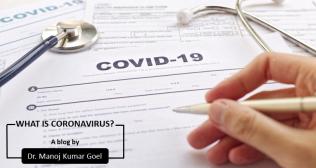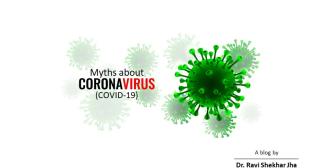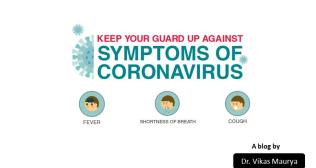
Sexsomnia: What It Is and How It Affects Sleep Behaviour
Many of us have heard about sleepwalking, but have you ever heard of engaging in sexual activities while asleep? Sexsomnia is an intriguing phenomenon that falls under the category of parasomnia, where an individual engages in sexual acts while asleep.
What is sexsomnia?
Sexsomnia is a rare sleep disorder that falls under the category of parasomnia, which involves unusual behaviour or activities during sleep. Sexsomnia is a sleep disorder characterised by sexual behaviour during sleep and typically occurs during non-rapid eye movement sleep. It is considered a variant of confusional arousals and sleepwalking, sometimes associated with obstructive sleep apnoea.
How does it impact life?
Sexsomnia is an often misunderstood type of parasomnia. The behaviours can range from sleep masturbation and sexual vocalisations to fondling and full sexual intercourse with a partner. Individuals usually have little to no memory, leaving them unaware of their actions. These episodes can be startling for partners and lead to confusion and distress when waking up to such situations.
Sexsomnia is often confused with sleepwalking sex and poses a unique challenge to diagnose and treat. Those affected may find themselves engaging in sexual activities without consent from their partner, leading to potential misunderstandings and emotional distress.
Studies indicate that the condition is usually triggered by stress, sleep deprivation or other underlying sleep disorders.
Symptoms
Sexsomnia can manifest in various ways while asleep and differ from each individual. Here are some of the behaviours.
- Moaning
- Talking about sexual activities
- Masturbation
- Fondling
- Sexual movements
- Sexual violence
- Sexual abuse
Partners might notice these unusual behaviours and feel confused or concerned.
In some cases, individuals with sexsomnia may experience wakeful confusion when roused during an episode. They might struggle to comprehend their surroundings and react defensively if confronted about their actions afterwards. Recognising these symptoms is crucial for effective management and support.
Causes
The exact cause of sexsomnia is unclear, but research has found that it is linked with other sleep disorders that can disrupt the normal sleep cycle, leading to episodes of abnormal behaviour during sleep. These include:
- Narcolepsy
- Obstructive sleep apnoea
- Sleepwalking
- Long-term insomnia
- Restless legs syndrome
- Teeth grinding
- Stress and anxiety
- Nocturnal psychotic disorders
- Sleep-related dissociative disorders
Risk factors
The risk factors for sexsomnia are not exactly defined. However, some of the indicated risk factors include:
- Genetics: If a family member has experienced it or a related disorder, you might be at increased risk.
- Alcohol consumption and certain medications: They can further elevate these risks by altering your brain’s activity during sleep.
Diagnosis
Diagnosing sexsomnia can be challenging. Men seem to be more frequently affected than women, though both genders can experience it. Increased awareness among healthcare professionals is crucial for accurate diagnosis and effective management of this unique disorder. The various steps in diagnosing sexsomnia include:
- Medical history and screening: This includes detailed sleep history, including accounts from partners or family members. The healthcare provider will ask about your sleep patterns, sleep behaviours and other sleep disorders.
- Sleep study polysomnography: This is the key diagnostic tool conducted to monitor brain activity and physical movements.
The healthcare provider reports from the partner or someone who has observed the episodes, which accounts for the diagnosis. In addition, questionnaires and sleep diaries are used to track sleep patterns and unusual behaviours over a period.
Treatment options
Treatment for sexsomnia focuses on managing symptoms and improving sleep quality. These include:
- Cognitive-behavioural therapy (CBT) is often recommended, helping patients identify triggers and develop coping strategies. Therapy can provide support for both the individual and their partner.
- Medications such as anxiolytics or anticonvulsants can be prescribed in case of a condition caused by seizures. These medications can help to regulate sleep patterns and may reduce the sexsomnia episodes.
- Lifestyle changes are crucial in establishing a consistent sleep routine. These include minimising stress, practising relaxation and limiting digital gadgets, which can improve overall sleep behaviour. Adapting such changes can significantly contribute to better management of the sexsomnia experience.
Coping strategies and management techniques
Managing sexsomnia involves a mix of strategies tailored to individual needs. Keeping a consistent sleep schedule can improve overall sleep quality, reducing the likelihood of episodes.
Creating a safe sleep environment is crucial. Remove any items or triggers that could lead to unwanted sexual behaviour during episodes. This might include securing windows and doors and informing your partner about potential occurrences.
Communication with your partner plays a vital role in coping with this condition. Discussing it openly can foster understanding and support, ensuring both individuals feel comfortable addressing any concerns that arise from incidents related to sexsomnia.
Legal implications and studies
Sexsomnia raises complex legal questions, particularly regarding consent. Since individuals are unconscious during episodes, they cannot give informed approval for sexual activities. This has led to cases where partners seek legal recourse after experiencing unwanted advances.
Research in this area is still evolving. Some studies indicate that sexsomnia might be more common than previously thought, but the exact prevalence remains unclear. Legal outcomes often hinge on whether a person can prove their condition and its impact on behaviour.
Courts have begun to acknowledge sexsomnia as a legitimate sleep disorder. This recognition could influence future rulings and how cases involving sleepwalking sex are handled legally, balancing public safety with individual rights.
Future research and statistics
Research on sexsomnia is still in its infancy, yet it holds significant potential for understanding this unique phenomenon. As scientists delve deeper into sleep disorders, studies are increasingly focusing on the relationship between sexual behaviour and parasomnia.
Statistical data regarding the prevalence of sexsomnia remains limited. Existing estimates suggest that around 1% to 7% of people may experience some form of sleepwalking sex during their lifetime. This uncertainty leaves room for further exploration.
Future research aims to clarify risk factors and develop more comprehensive diagnostic criteria. Enhanced understanding can lead to improved treatments and support systems for those affected by this complex disorder.
Conclusion
Navigating sexsomnia, or sleepwalking sex, can be challenging for both individuals and their partners. Awareness is crucial in understanding this unusual behaviour. Numerous resources are available to help those affected by sexsomnia.
Support groups provide a platform where individuals can share experiences and coping strategies. Additionally, consulting with healthcare professionals who specialise in sleep disorders is essential for personalised advice and treatment options.
Understanding that you’re not alone in this experience can bring comfort and clarity. Education about what is sexsomnia allows people to manage situations more effectively while fostering open communication between partners. Utilise these resources as part of your journey towards better sleep health and relationship dynamics.



















